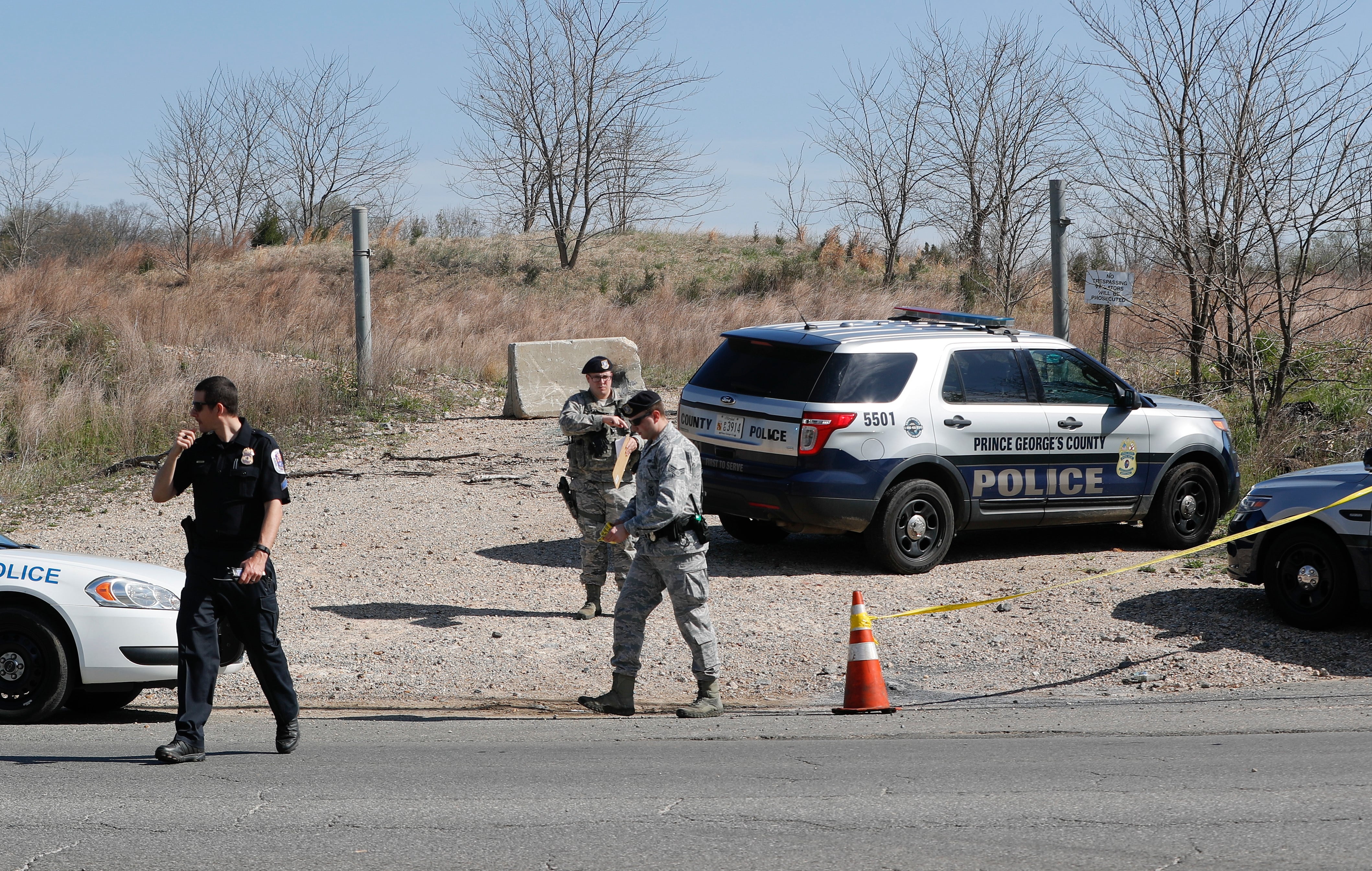An improperly-assembled engine caused an Air National Guard F-16C Fighting Falcon to crash near Washington, D.C., in April, according to an Air Force investigation released Thursday.
The accident investigation board found the main engine control of the F-16, from Joint Base Andrews in Maryland, was missing the necessary 600-degree training ring and the anti-rotation pin in its differential pressure pilot valve, Air Combat Command said in a release. This caused the main engine control to send too much fuel to the engine, leading to the April 5 crash.
“This led to severe engine overspeed, severe engine over-temperature, engine fire, and, ultimately, a catastrophic engine failure,” the release said.
The release said the pilot, from the 121st Fighter Squadron, 113th Wing at Andrews, safely ejected and was not injured. At the time of the crash, Brig. Gen. George Degnon, the acting adjutant general of the District of Columbia Air National Guard, said that the pilot was medically evacuated to Malcolm Grow Medical Clinic at Andrews, and was treated and released “in good spirits.”
RELATED

Immediately after the fighter left Andrews, it “experienced an uncommanded engine acceleration, followed by a loss of thrust.” The pilot was able to put the fire out by placing the throttle to cut-off, the release said. But the damage was done and the engine was unusable.
The pilot jettisoned the external wing fuel tanks to lighten his plane‘s weight and allow it to glide farther, but the nearest recovery airfield was too far away. So, the release said, the pilot aimed the F-16 toward an open field nearby and ejected safely. It crashed in a wooded area in Clinton, Maryland, southwest of Andrews, at about 9:17 a.m. and was destroyed. The crash happened less than four minutes after takeoff.
The Air Force said the plane cost $22 million, and the environmental clean-up cost more than $856,000.
The report faulted the 552nd Commodities Maintenance Squadron at the Air Logistics Complex in Oklahoma City, Oklahoma, for having inadequate procedures for keeping track of parts, which was a “substantially contributing factor” in the crash. The 552nd didn‘t make sure that only the necessary parts were provided to the mechanics putting the main engine control system together. And because there were excess parts left over, the report said, that could have made it more likely the mechanics overlooked the fact that they forgot to install the pin and ring.
However, the report said the engine could still have been put together incorrectly even if a better parts accountability system was in place.
The report said there was no evidence showing the 113th’s maintenance personnel or supervision played a role in the crash.
In April, Degnon lauded the pilot for his quick thinking to steer the plane away from the public.
“The pilot only had time to rely on his extensive training while trying to mitigate any kind of collateral damage,” Degnon said.
The pilot was flying with three other F-16s as part of a routine training operation. It was heading to a range to practice strafing, and was loaded with 510 training rounds, which have less gunpowder than the ammunition usually loaded in the F-16.
Stephen Losey is the air warfare reporter for Defense News. He previously covered leadership and personnel issues at Air Force Times, and the Pentagon, special operations and air warfare at Military.com. He has traveled to the Middle East to cover U.S. Air Force operations.





